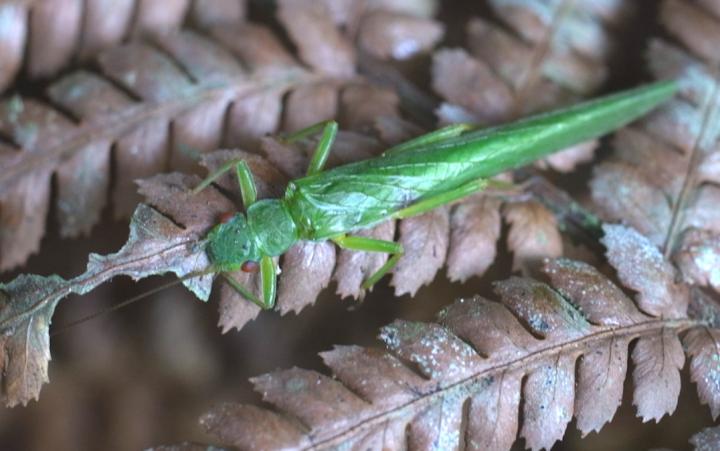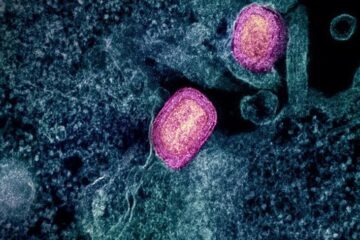Creating a ground plan for stonefly evolution

Stonefly species
Photo by Shodo MTOW
Researchers led by the University of Tsukuba find that differences in egg structure among stonefly species can provide insight into the evolutionary history of the order.
If a creature with eight legs, a large abdomen, and lots of eyes comes crawling your way, even if you have never seen one like it before, you know instinctively that it is a spider. Likewise, an animal with wings, feathers, and a beak is unlikely to be mistaken for anything other than a bird. The common features of a group of animals that make them immediately recognizable are often called a ground plan or body plan, and have traditionally been used to categorize animals.
More recently, researchers have found that comparative embryology, the study of how different animals develop at the embryonic stage, can also shed light on the ground plan of a group of animals and help identify their evolutionary history.
In a study published in the December 2020 issue of Arthropod Structure and Development, a group of researchers led by the University of Tsukuba examined the eggs of five different stonefly species to infer the ground plans of each and answer lingering questions about the evolutionary relationships among stonefly species.
“Although there are more than 3,500 described species of stonefly (order Plecoptera) distributed across all continents except Antarctica, there are only two main groups (called sub-orders): Antarctoperlaria, found mainly in the Southern Hemisphere, and Arctoperlaria, which includes the Northern Hemisphere species,” explains senior author Professor Ryuichiro Machida. “While previous studies have uncovered the main features of the embryonic ground plan of Arctoperlaria, there is little information on the embryonic development of Antarctoperlaria.”
To establish the embryonic ground plan of the Antarctoperlaria, and potentially the wider order Plecoptera, the researchers examined the eggs from five different stonefly species representing three of the four main families of Antarctoperlaria. Both the entire eggs and ultrathin egg sections for transmission electron microscopy were examined.
By determining the shared and divergent characteristics of the five species, the researchers were able to infer the ground plans not only of the four main antarctoperlarian families, but also of the larger order Plecoptera.
“Eggs from two of the four main families had hard outer membranes, called chorions, which, although functionally similar, were structurally very different,” says Professor Machida. “Given that only one group of arctoperlarian eggs have a similar hard chorion, we can infer that a thin chorion is a ground plan character of Plecoptera and that a hard chorion is an evolved trait.”
Similarly, attachment structures, which anchor the eggs to the riverbed, have been regarded as being an ancestral feature. However, careful inspection revealed that they were actually acquired in parallel in each lineage, proving that determining the embryonic ground plan of a species can answer important questions about its evolutionary history.
###
The article, “Egg structure of five antarctoperlarian stoneflies (Insecta: Plecoptera, Antarctoperlaria),” was published in Arthropod Structure and Development
(DOI: 10.1016/j.asd.2020.101011).
Media Contact
Naoko Yamashina
kohositu@un.tsukuba.ac.jp
81-298-532-066
Related Journal Article
All latest news from the category: Life Sciences and Chemistry
Articles and reports from the Life Sciences and chemistry area deal with applied and basic research into modern biology, chemistry and human medicine.
Valuable information can be found on a range of life sciences fields including bacteriology, biochemistry, bionics, bioinformatics, biophysics, biotechnology, genetics, geobotany, human biology, marine biology, microbiology, molecular biology, cellular biology, zoology, bioinorganic chemistry, microchemistry and environmental chemistry.
Newest articles

After 25 years, researchers uncover genetic cause of rare neurological disease
Some families call it a trial of faith. Others just call it a curse. The progressive neurological disease known as spinocerebellar ataxia 4 (SCA4) is a rare condition, but its…

Lower dose of mpox vaccine is safe
… and generates six-week antibody response equivalent to standard regimen. Study highlights need for defined markers of mpox immunity to inform public health use. A dose-sparing intradermal mpox vaccination regimen…

Efficient, sustainable and cost-effective hybrid energy storage system for modern power grids
EU project HyFlow: Over three years of research, the consortium of the EU project HyFlow has successfully developed a highly efficient, sustainable, and cost-effective hybrid energy storage system (HESS) that…





















